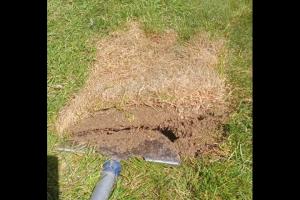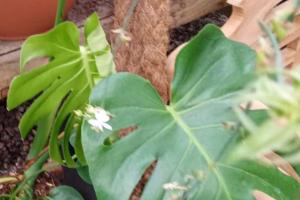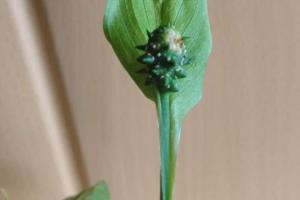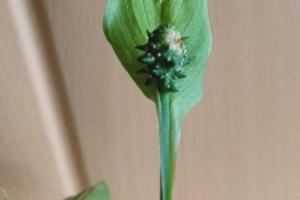How to Care for English Ivy Indoors
English Ivy (Hedera Helix) is often touted as an easy houseplant to grow indoors.
However they do not grow as well in hot and dry climates with low humidity or in houses with significant indoor heating, due to the fact they are native to the cool temperature climate of England.
To care for English Ivy as a houseplant it is important to maintain a cool temperature of between 35°F and 60°F (2°C to 16°C), locate the ivy in bright indirect light and to only water when the top inch of the soil is dry.
Here is a table summarizing the care requirements of English Ivy:
| Indoor Ivy Growing Requirements: | How to Care for English Ivy Indoors: |
| Watering: | Water ivy with a generous soak when the top inch of the soil is dry which is usually every 7 days in Spring and Summer and every 10 days in Fall in Winter. |
| Light: | Bright, indirect light ensures the best growth, but it can grow in the shade. Avoid direct sunlight. |
| Temperature: | Ivy prefers cooler temperatures then most houseplants with 35°F and 60°F (2°C to 16°C) being the optimal temperature range. |
| Fertilizer: | Use a general, all purpose houseplant fertilizer once a month in the Spring and Summer. However do not use a fertilizer in Winter. |
| Pruning: | Prune your ivy every Spring to create a more bushy appearance as the vines can grow leggy. |
| Potting Soil: | Use a mix of 2/3’s houseplant potting soil with around 1/3 perlite or pine bark based potting mix to create the optimal soil structure for ivy. |
| Repotting: | Repot ivy every 2 years to a pot that is 2 inches larger in diameter then the previous pot. |
| Best Pots for Ivy: | Ivy is hardy and can grow in any pot with a drainage hole, however clay and terracotta are best as they are porous allowing the potting soil to dry out evenly. |
| Winter Care: | Mist the leaves every other day and keep the ivy in a bright cool spot in the house. |
How Often to Water Ivy
Water indoor English ivy when the top inch of the soil feels dry. Typically this means watering once every 7 days during active growth in the Spring and Summer and once every 10 days during Fall and Winter when the plant is dormant.
This cycle of watering meets the Ivy’s water requirements without risking problems associated with overwatering such as root rot as ivy does not like wet soil.
Do not let the soil dry out completely between each bout of watering as this causes the leaves to turn brown.
Always water the soil with a generous soak to the extent that water trickles from the drainage holes in the base of the pot to ensure the potting soil is evenly moist. If you water too lightly the moisture does not reach the roots where it is required.
Mist the leaves every few days if you are in a climate with low humidity as this prevents the edges from turning brown.
How Much Light Does Ivy Need?
Indoor English ivy grows best in bright indirect light. Ivy can grow in direct morning sunlight but is likely to scorch brown in afternoon sun. Ivy can grow in full shade but grows more slowly and the foliage is smaller.
Variegated varieties of English Ivy can lose their contrasting colours and turn green if they are in too much shade, so it is important to find a location with bright light to maintain and increase the variegation.
You can provide protection for the ivy in sunny rooms by using a sheer curtain to avoid direct sunlight.
I personally grow my variegated ivy in a bright porch, that has frosted glass at the front of my house which faces South to ensure it has enough light for variegation and has the optimal temperature range for ivy.
Ivy can grow in the shade but the rate of growth is much slower and the leaves tend to be smaller.
The Best Temperature Range for English Ivy is Between 35°F and 60°F (2°C to 16°C)
Ivy is native to the cooler English climate and therefore does not tolerate the hot temperatures and dry air from indoor heating of modern houses.
Therefore to grow English ivy successfully it is important to replicate the conditions of its native environment by locating it in a cool unheated porch or draughty area of the house.
The optimal temperature range for English ivy is between 35°F and 60°F (2°C to 16°C) and problems can occur if the temperature at night is in excess of 60°F (16°C) with yellowing leaves and poor growth.
If you do not have a room with these temperatures then I recommend growing Pothos (also known as ‘Devil’s ivy’) as this has a similar appearance and due to its tropical origins a greater tolerance of warmer household temperatures.
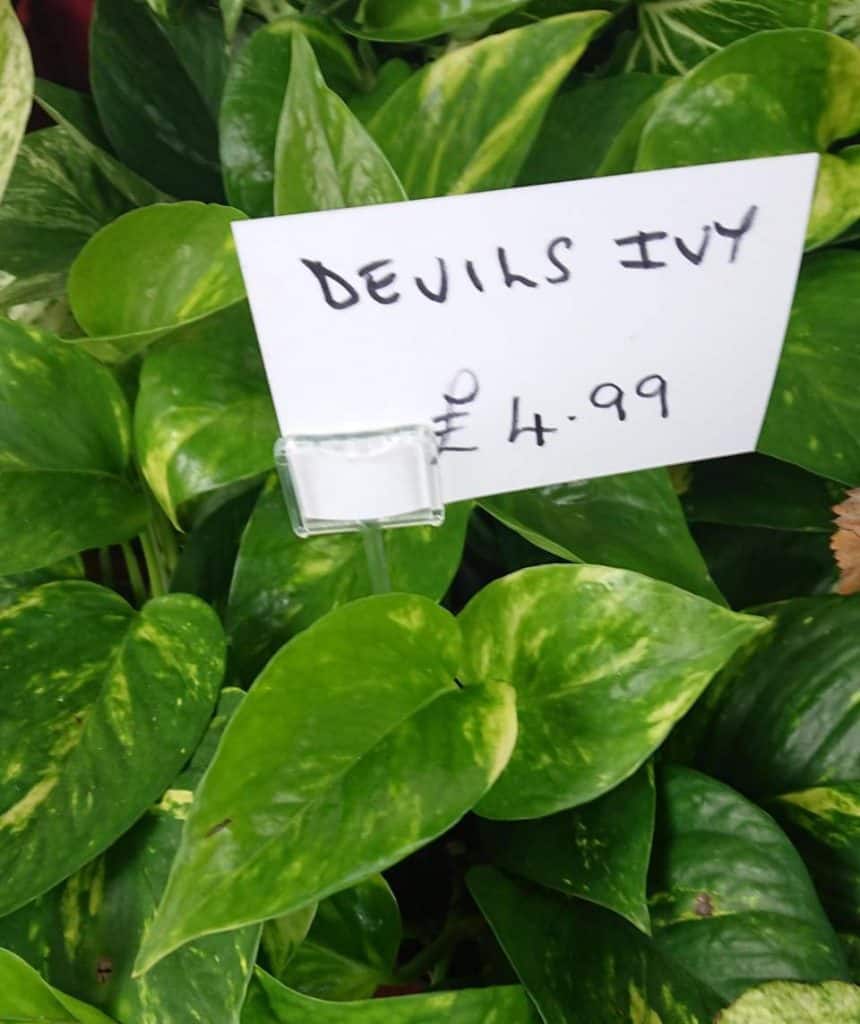
How Often to Fertilize Indoor Ivy
Use a general all purpose houseplant fertilizer once a month during Spring and Summer to support healthy growth. Do not use any fertilizer in the Winter whilst the ivy is dormant as this can harm the roots.
Ivy is not a particularly heavy feeder but fertilizer and bright light can promote bigger, glossy ivy leaves.
How Often to Prune Indoor English Ivy
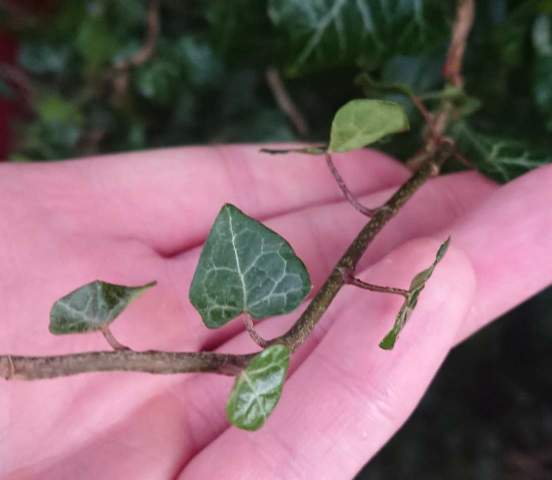
Prune indoor ivy every Spring to a desired size and shape. Consistent pruning promotes a more bushy attractive appearance with more foliage.
Trim the vines back with a sharp, sterile pair of pruners. You can successfully prune ivy at any time of year due to its hardiness but Spring is the best time as this is when the ivy is at its more resilient, during active growth.
I personally recommend propagating the cutting you take from your ivy as it is incredibly easy to propagate and is a cost effective way for more houseplants.
Best Potting Soil For English Ivy
Ivy need a well draining potting soil with an aerated porous structure which holds moisture yet allows excess water to drain away.
I personally use a generic miracle-gro potting soil and mix it with around 20% percent perlite or pine bark based potting compost.
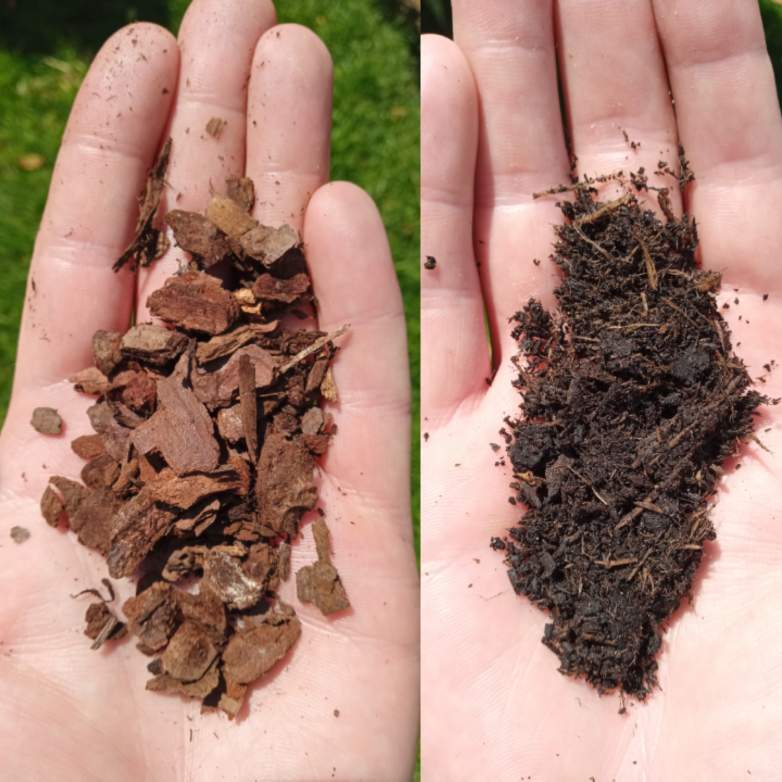
The added pine bark or perlite are great amendments for an ivy potting mix as the large particle size creates the optimal porous soil structure to avoid problems associated with overwatering such as root rot and replicates the preferred soil conditions of the ivy’s native environment.
How Often to Repot Ivy
Repot ivy every 2 years in the Spring into a pot that is 2 inches larger in diameter then the current pot. Repot with new potting soil amended with perlite for drainage ensuring the new pot has drainage holes in the base.
Repotting with new soil ensures the ivy has enough nutrients support healthy growth and the larger pot can hold more moisture which prevents the ivy from drying out too quickly and developing brown leaves.
It is important that the new pot is no more then 2 inches larger then the previous pot as over-potting in a pot that is disproportionately larger then the size of the ivy plant can cause too much moisture around the ivy’s roots and increase the risk of root rot.
Best Pots for Indoor Ivy Plants
Plant ivy in ceramic, clay or terracotta pots with a wide diameter of at least 6 inches to accommodate the ivy’s shallow roots system. Ivy spreads its roots wide and shallow so the pot does not have to be deep. Ensure the pot has drainage holes in the base.
I personally prefer unglazed clay and terracotta pots for growing ivy as they are porous materials that allow the soil to dry out more evenly whereas plastic or glazed ceramic are impermeable and can retain water around the ivy’s roots for too long.
This can lead to an increased risk of root rot if you overwater the plant.
It should be noted that I have found ivy is at more risk from overwatering then underwatering as it is much easier to revive an under watered indoor ivy.
How Fast Does Ivy Grow?
Ivy can grow particularly fast as an outside climber in its native environment and quickly become a problematic plant with more then 2 feet of growth in a year (70 cm).
However, indoor growth rate tends to be a more moderate with around 12 inches (30 cm) or so a year.
You can increase the rate of growth by locating ivy in bright, indirect light to ensure the ivy has all the energy it needs to grow and use fertilizer in the Spring and Summer season.
Keep in mind that the fast growing vines have aerial roots that cling to anything in reach and they can leaves marks when you try to remove the vines.
If your ivy grows too long you can just prune it back with a sterile pair of pruners.
How to Care for Ivy in the Winter
Ivy can struggle indoors during Winter due to the increase in temperature from indoor heating which not only increases the temperature unfavourably high but also saps moisture from the air.
Mist the leaves of your indoor ivy every 2 or 3 days during Winter to increase the humidity around the leaves and keep it within a cool room with a temperature range of between 35°F and 60°F (2°C to 16°C). Reduce watering to once every 2 weeks ensuring the top inch of soil is dry before watering again.
Do not use a any fertilizer in the Winter as the ivy is dormant.
Whilst ivy is an evergreen plant, in my experience some leaves fall off every Winter as part of their natural cycle, particularly if the ivy is in a shaded room, but the vines can regrow in the Spring and improve the appearance.
I have had good success growing my ivy in a cool porch at the front of my house in Winter as it has enough light to sustain most of the leaves and has a favourable temperature range, although a cool window sill can work as well.




